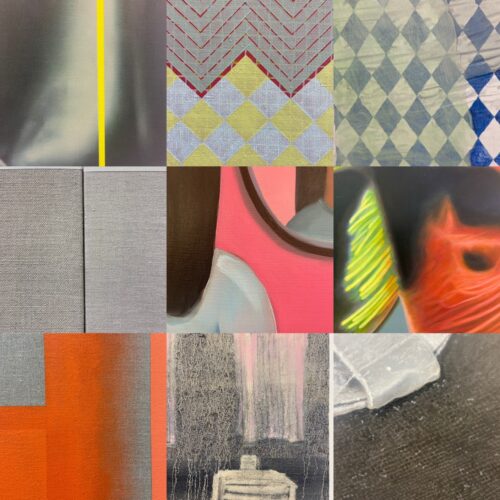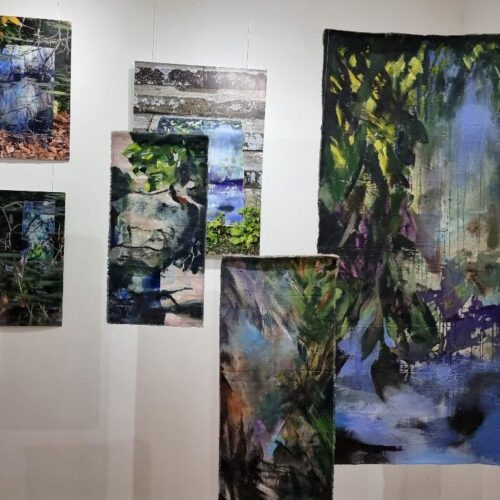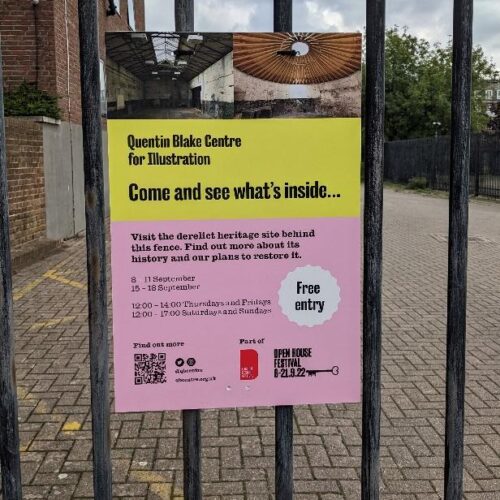
Study visit to Memory Palace
This is a post from the weareoca.com archive. Information contained within it may now be out of date.

Re-visit Jim’s blog post about his visit to this exhibition, below and then sign up for a trip to see it with two OCA tutors and an opportunity to network with likeminded OCA students. This will take place on Thursday 3rd October starting at 11.30am. Email enquiries@oca-uk.com for a place.
Illustration as an art form is not often given wall space in a major gallery. Often confined to the books and magazines that commission these interpretative artworks, the technical skills and visual imagination of an illustrator can often be ignored or looked down upon in today’s compartmentalised art world. At the Victoria and Albert Museum and for the first time in 10 years there is an excellent display of the illustrator’s art and craft.

Memory Palace is a collaborative exhibition between a writer –Hari Kunzru- and 20 contemporary illustrators, typographers and graphic designers. It has been conceived and designed as a walk-in book or, in contemporary terminology, an installation.
The story is a science fiction tale set in a post-apocalyptic London without technology, where books are banned, memory has been lost and people, events and places are only half remembered. Descriptions of ‘Old London’ acknowledge places such as King’s Curse, LiverpoorStreet, Waste Monster, Notting Hell and Edgewhere.

The collaborators in this dystopian tale are the graphic artists who interpret the thoughts of a prisoner who is writing his words and memories on the prison walls. In this future London, The Limpicks Park lies in ruins and the Shard is covered in weeds.
Graphic illustrator Némo Tral revels in a chance to leave the small page behind and works on a large scale with back-lit projected images.The advertiser Erik Kessels builds a temple-like structure out of newspapers and magazines evoking the dim and distant religion of Recycling that was once observed.
The illustrative collective Le Gun creates a medicine man’s chariot-come-caravan complete with witch doctor and pulled by four malevolent foxes. It is a three dimensional drawing in black and white brought to life with such reality that any planned visit to this doctor would be considered ill advised.
Where memory has lapsed and is at best only fragmentary, Charles Darwin is remembered as being responsible for the genetic manipulation of animals and plants. The illustrator Jim Kay has risen to this challenge and with the help of Marco Nisbet, who made the box, produced an exquisite painted reliquary that relates to the ‘Law of the Milord Darwing’. This beautifully crafted and decorated box contains Victorian curiosities, a golden tree of life, a curious hand-made crow and painted side panels that collage memories of paintings and related incidents.
Rogier van der Weyden’s ‘Descent from the Cross’is remembered and painted in watercolour and gold leaf but with the dead Christ at the disposition dressed in a pair of blue jeans.
(His description of the making of the piece can be found at http://www.bloglovin.com)
Stuart Kolakovic creates a framed altarpiece in a Byzantine style. It tells the tale of Milord Rayleigh and Lady Ayn Stein who wrote the Laws of Relativity.
Alexis Deacon uses drawing as his primary medium and uses the traditional illustrator’s tools of pencil, watercolour, charcoal and ink. He draws the Prisoner in his cell using chiaroscuro as he wanted “physical light to be associated with moral darkness”.An illustrator of children’s books, he relishes the chance to darken his pallet and tackle more disturbing subject matter.
Henning Wagenbreth contribution took two years to build and ingeniously can be packed away into itself and reassembled in different orders. It recreates what was thought to be a museum, a place for ‘musing and amusement’. The hand-painted building blocks contain simplified pictures with both German and English words adding to the confusion. A museum for children made out of building blocks to be knocked down and reconstructed at will.
The Victoria and Albert museum was itself built as a repository for the decorative arts. It shows objects pictures and artefacts from all period of civilisation and, less we forget, links them to their time and place. As the crowds stand in line to see the stage costumes of a 20th century artist known as Da Vid bowie and try to relive the time of their youth, the work in Memory Palace does not seem so far fetched.





